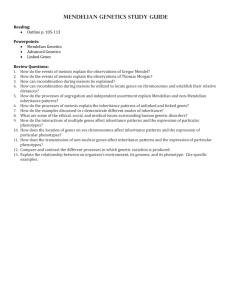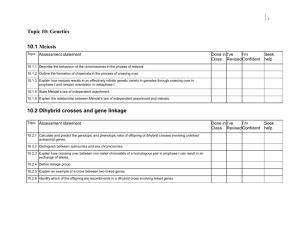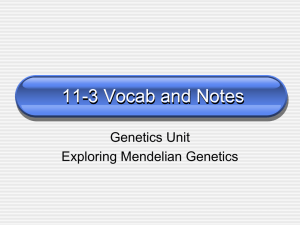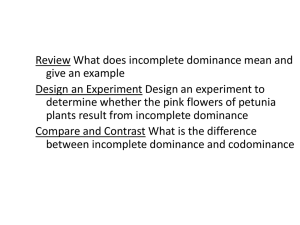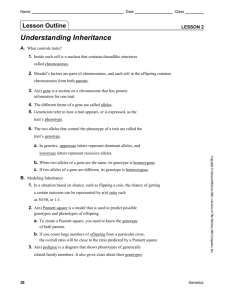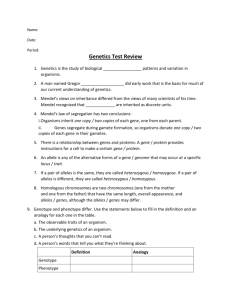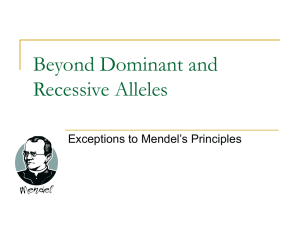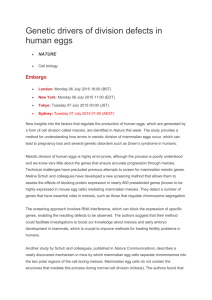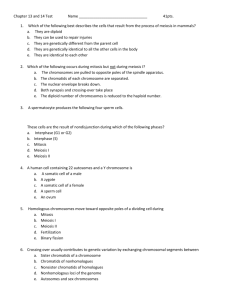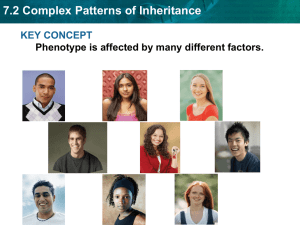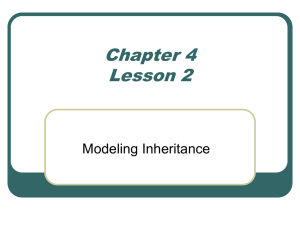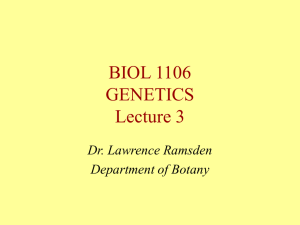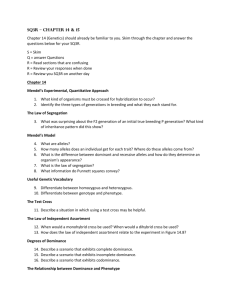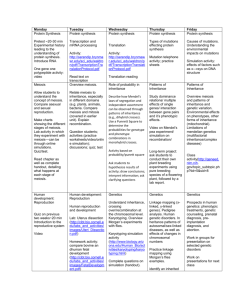Name: Sexual Reproduction Unit Study Questions Chapter 11
advertisement
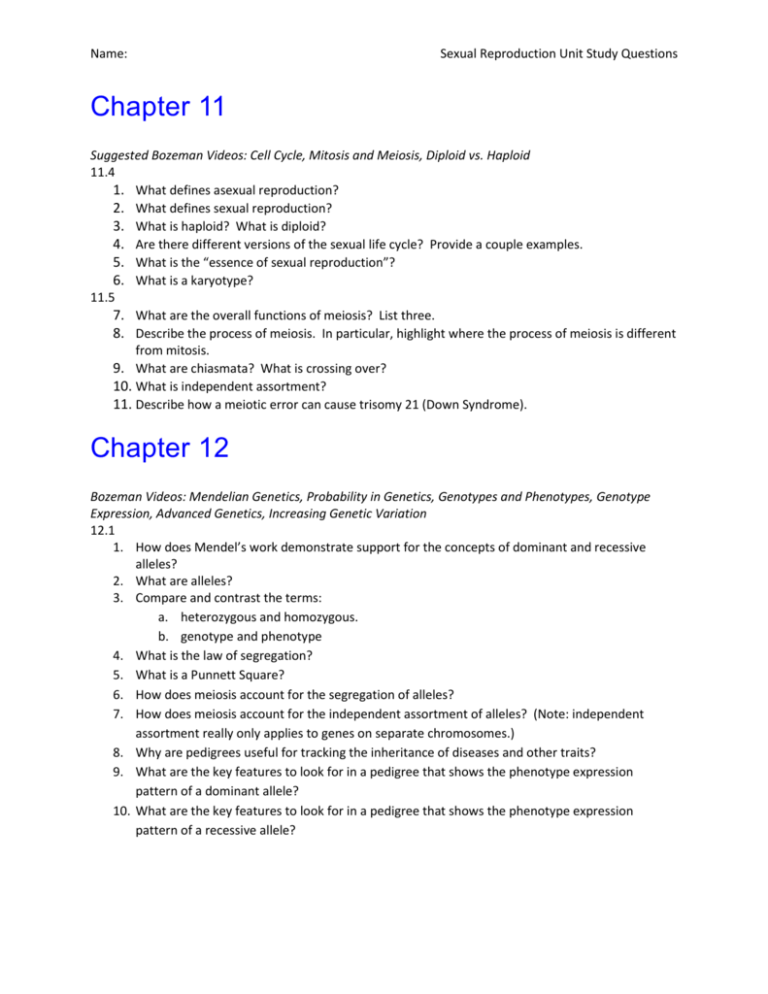
Name: Sexual Reproduction Unit Study Questions Chapter 11 Suggested Bozeman Videos: Cell Cycle, Mitosis and Meiosis, Diploid vs. Haploid 11.4 1. What defines asexual reproduction? 2. What defines sexual reproduction? 3. What is haploid? What is diploid? 4. Are there different versions of the sexual life cycle? Provide a couple examples. 5. What is the “essence of sexual reproduction”? 6. What is a karyotype? 11.5 7. What are the overall functions of meiosis? List three. 8. Describe the process of meiosis. In particular, highlight where the process of meiosis is different from mitosis. 9. What are chiasmata? What is crossing over? 10. What is independent assortment? 11. Describe how a meiotic error can cause trisomy 21 (Down Syndrome). Chapter 12 Bozeman Videos: Mendelian Genetics, Probability in Genetics, Genotypes and Phenotypes, Genotype Expression, Advanced Genetics, Increasing Genetic Variation 12.1 1. How does Mendel’s work demonstrate support for the concepts of dominant and recessive alleles? 2. What are alleles? 3. Compare and contrast the terms: a. heterozygous and homozygous. b. genotype and phenotype 4. What is the law of segregation? 5. What is a Punnett Square? 6. How does meiosis account for the segregation of alleles? 7. How does meiosis account for the independent assortment of alleles? (Note: independent assortment really only applies to genes on separate chromosomes.) 8. Why are pedigrees useful for tracking the inheritance of diseases and other traits? 9. What are the key features to look for in a pedigree that shows the phenotype expression pattern of a dominant allele? 10. What are the key features to look for in a pedigree that shows the phenotype expression pattern of a recessive allele? Name: 12.2 11. 12. 13. 14. 15. 12.3 16. 17. 12.4 18. 19. 20. 12.5 21. Sexual Reproduction Unit Study Questions How do new alleles arise by mutation? Describe multiple alleles. Describe incomplete dominance. Describe codominance. Note: pleiotropy is beyond the scope of the course and the AP exam. Note: epistasis is beyond the scope of the course and the AP exam. Discuss the effect/influence of the environment on phenotype. Linked genes are usually inherited together, but not always. What process can “unlink” genes? How can linked genes be used to map the locations of genes on chromosomes? Describe sex-linked inheritance patterns. Explain the inheritance pattern of nonnuclear genes; i.e. genes in mitochondria and plastids. 22. (pg. 457) Use the Colias butterfly to explain the heterozygote advantage. 23. (pg. 510) Describe how the process of gene duplication can give rise to new phenotypes.


